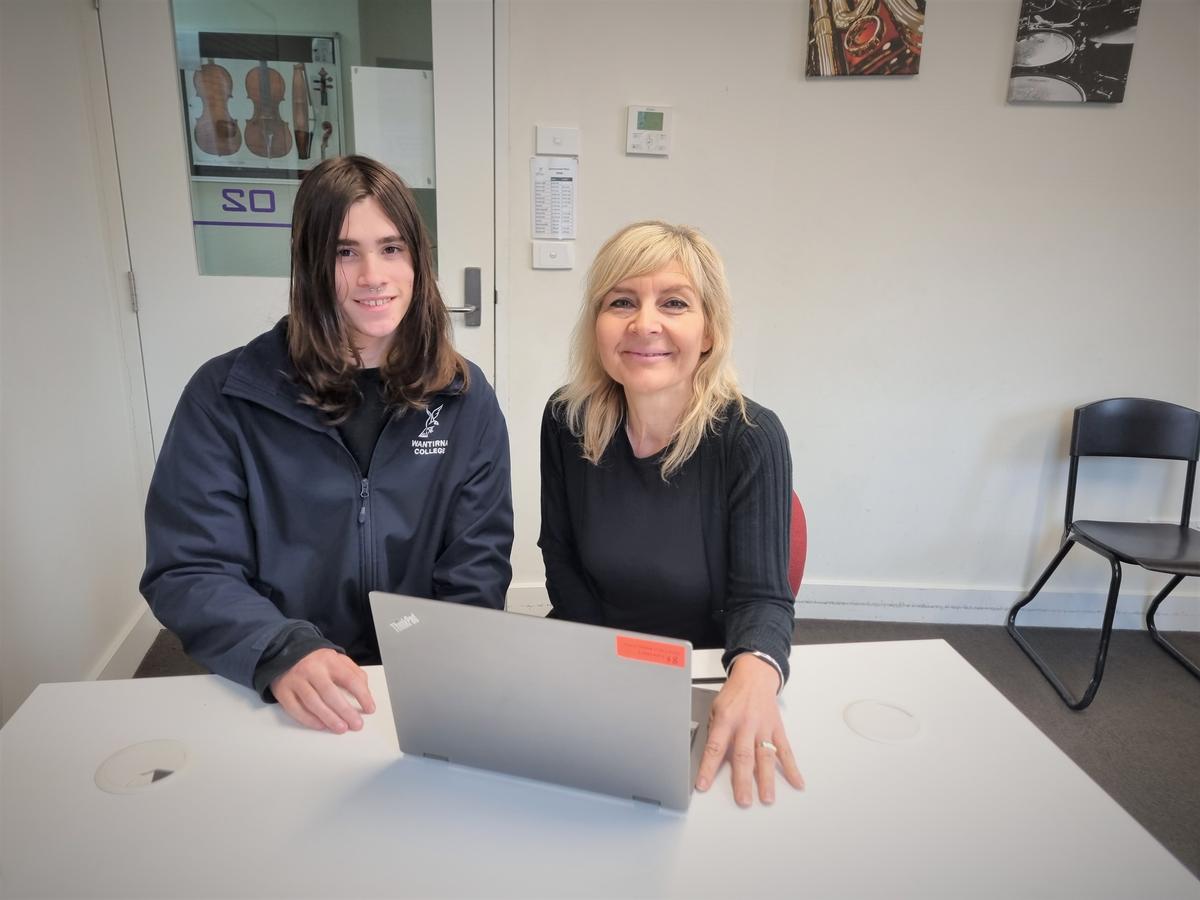MYLNS
Middle Years Literacy & Numeracy Support

MYLNS
Middle Years Literacy & Numeracy Support
“Our deepest fear is not that we are inadequate. Our deepest fear is that we are powerful beyond measure. It is our light, not our darkness, that most frightens us. We ask ourselves, who am I to be brilliant, gorgeous, talented, fabulous? Who are you not to be? "
These are the words of author Marianne Williamson, and they clarify the idea that learning is powerful, especially if we are interested, engaged and passionate about what we learn. This year Owen O’Malley, a Year 10 student at Wantirna College and a member of the MYLNS Literacy program, began the process of crafting his own story.
Owen was able to embrace the idea of using critical thinking and reflection as he considered his strengths and weaknesses and his hopes for a future career pathway.
Throughout this process, Owen made some informed decisions about his learning priorities. He decided to give up his part time job, and consequently this enabled him to focus on his love of reading and especially his interest in Philosophy and Music. Positive feedback from his teachers provided a growth mindset.
Along this journey Owen was recommended to attempt English Literature at VCE Level. An incredible achievement!
Another important trait that Owen displays has been his sheer persistence, drive and love of music. A piano, gifted by Coral, was enough to motivate Owen to continue to practise and learn how to read sheet music and even to turn up every lunch time to use the music rooms to improve his skills. This passion for music has been a driving force in expanding his general capabilities.
Our conversations with Owen have been integral in introducing Owen to the Wantirna College Music Department to look at opportunities for next year. Mr Danny Van Bergen and Mrs. Nicholetta Rigano have also paved the way for Owen to consider joining a music ensemble next year. This will most definitely be an inspirational moment to look forward to.
Owen’s Literacy skills are evident in the informative essay included in this newsletter, comparing the Romantic and Classical Music periods in history. This piece of work is an excellent example of Integrated learning in which literacy brings to life topics across many disciplines.


Music from pianos has always had a distinct sound but the personality has changed drastically over time; like how the piano evolved from the harpsichord allowing for a softer sound but the instrument wasn’t the only thing that has changed over time ,as the composers of each period caused many changes in style creating the differences of each era. The two periods that we’ll be looking at are the Classical and Romantic periods. The differences between these two are somewhat subtle as there aren’t any lyrics to help discern them as well as the fact that they are played on the same instrument, unless played in an orchestra. The point of this essay will be to highlight the similarities and differences between these two beautiful periods.
The Classical period of piano came before the Romantic, starting in the 1750’s and ending in the 1830’s. This period was known for the balance of emotions creating many relaxing and simple sounds in music ,of course there are exceptions to that. Many well-known composers came from this period like Mozart, Beethoven and Schubert. The Romantic period on other hand began in the 1860’s, this period was famous for the passion and emotion embedded in the formula allowing for the highlight of multiple emotions and ideas within one piece. One of the most famous examples of this juxtaposition of feelings is Clair De Lune as it highlights the light and the dark through alternating between minor and major chords, creating both an uplifting and dark feel. Classical music is more focused on the balance of melodies, often augmenting a musical idea using the classic technical formula.
The technical formula of sheet music within both periods has changed dramatically over the course of time. The first thing evident is how much more dynamics and notation exists in the sheet music of the Romantic period, compared to Classical sheet music. Dynamics are what change the feel of each note like how hard or soft one is played, whilst notation changes the flow of a melody or how a chord is played. This allows the music to sound much more diverse. Both periods have this but it is less abundant in the Classical period.
The music in the Classical period is often very objective with no wiggle room for interpretation, whilst the Romantic period is more abstract and often people insert their own emotion into each time the piece is played. The tempos are often more interesting like 9/8 instead of the common tuplet, triplet or quintuplet which all dictate how long and how many beats are in a bar. These common times are found more commonly in Classical pieces than Romantic pieces.
Both periods have very beautiful and intricate pieces composed by amazing composers, with each having their own distinct sounds but the differences between the Classical and Romantic periods are merely the evolution of music that will continue to evolve as we look back to appreciate the pieces from these amazing times. Forever cemented in the history of music being extremely influential on modern music, we take inspiration from our predecessors and continue to shape music.
Owen O’Malley, Year 10
Congratulations Owen!
We wish you well as you discover all your strengths in the future!
Debbie Mantzanidis
Middle Years Literacy